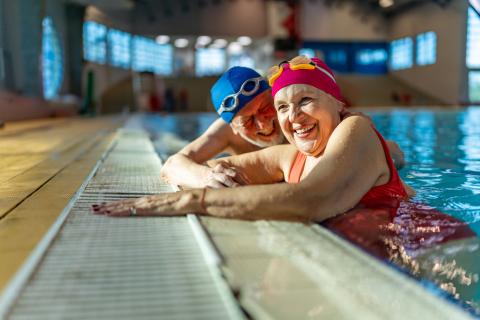Swim Safely
Never swim alone
Swimming alone can be risky, regardless of age or skill level. Always swim with a companion, even if you consider yourself a strong swimmer. Having someone with you is essential in case of an emergency.
Consult your doctor
Before engaging in swimming or any physical activity, consult your doctor, especially if you have underlying health conditions or are on medication. Certain medications may impact your motor skills, limit how long you can be in the sun, or cause drowsiness, which can be dangerous when swimming.
Stay sober
Alcohol and swimming do not mix. Alcohol reduces your body’s ability to stay warm, impairs your ability to swim effectively, and can increase the risk of accidents. Additionally, high water temperatures, like those found in hot tubs, can heighten the effects of alcohol, leading to an increased risk of drowning.
Be aware of water temperature
Extreme water temperatures, whether too hot or too cold, can pose risks to swimmers of all ages. Hot water can lead to dehydration and heat stroke, while cold water can cause hypothermia. Water over 104 degrees or under 70 degrees Fahrenheit should be avoided.
Use safety gear
When swimming in open water, wear a life jacket, particularly if you’re not a confident swimmer. In pools, flotation devices like pool noodles and kick boards are good options for those who’d prefer a little assistance in staying afloat.
Hydrate and protect your skin
Swimming can be dehydrating, especially on those hot days. Drink plenty of water and apply waterproof sunscreen to protect your skin from harmful UV rays. Limit your time in direct sunlight to prevent overheating.
Mind your surroundings
Be cautious of wet surfaces near pools and hot tubs. Appropriate footwear, like sandals or water shoes, can help to prevent slips and falls. Eliminate trip hazards and use handrails for support when necessary. When swimming in unfamiliar bodies of water, avoid diving in headfirst to prevent injuries.
Know your limits
Swim within your capabilities and don’t taking unnecessary risks like venturing too far from shore or swimming in waters deeper than you can handle. Listen to your body and take breaks as needed.
Learn CPR
And finally, consider learning cardiopulmonary resuscitation (CPR). Being trained in CPR can be lifesaving in emergency situations. Consider taking a CPR certification course to be prepared to assist others in case of drowning or other emergencies.
While swimming is an excellent form of exercise for older adults, safety should always come first. By following these tips and staying vigilant, you can enjoy the health benefits of swimming while minimizing the risks associated with water-related activities. Remember, prevention is key to a safe and enjoyable swimming experience.
